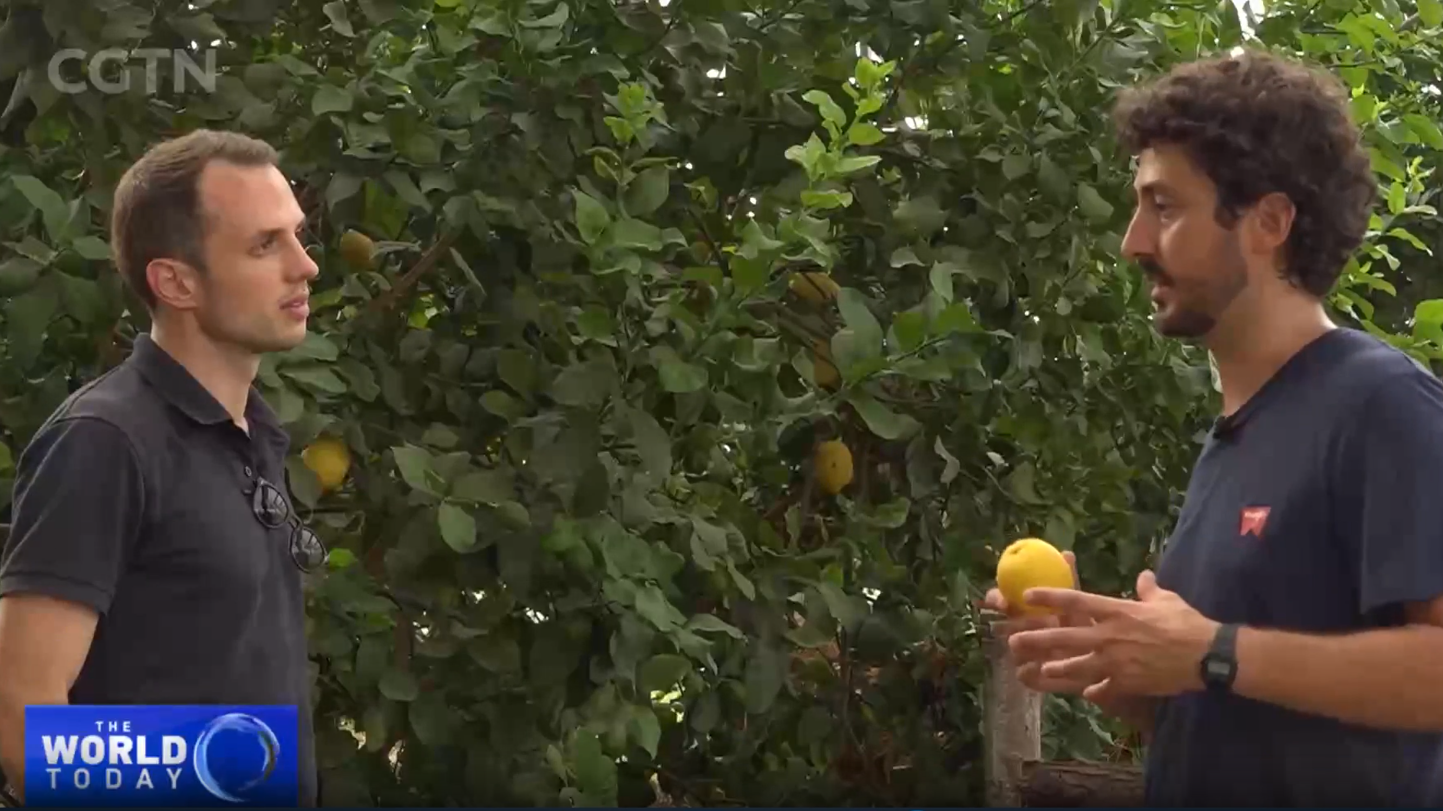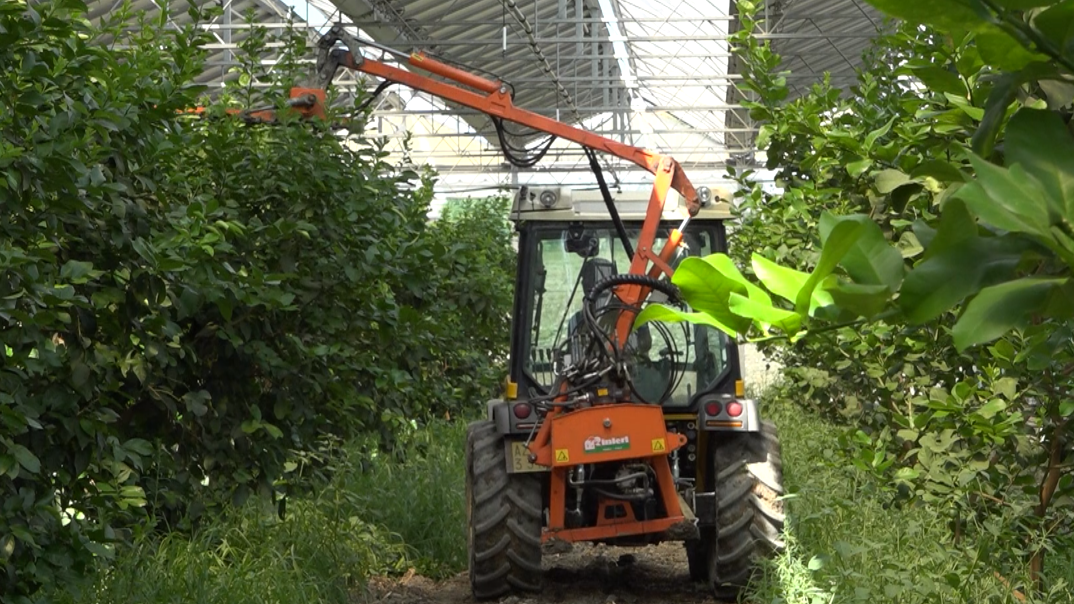02:38

WATCH: Meet the Lancellotta family revolutionizing fruit farming
Your shirt starts sticking to your back as soon as you step into the vast greenhouse. It's 35 degrees Celsius outside and even hotter under the clear plastic roof.
They've been growing citrus fruits in this corner of southern Italy for generations. Citron trees are organized in neat lines. Above the green leaves of the trees, though, are meters and meters of electrical wiring connected to solar panels on the roof.
The Lancellotta family, who owns a farm in Calabria and several others across southern Italy, was an early adopter of agrivoltaic farming in the country. Crops are grown underneath solar panels, giving farmers two sources of income: the fruits of their harvest and selling electricity generated by the panels.
Saving water as heatwave hits farmers
As extreme heat scorched the Italian countryside this summer, the Lancellotta family says agrivoltaic farming provides other advantages.
"We have already recorded data over several years about the savings when it comes to water. We use roughly 1 million liters per hectare, compared to 6 million generally used in a field for the cultivation of citrus fruits," said Antonio Lancellotta, CEO of farming company Le Greenhouse.
However, covering all of these greenhouses with solar panels does not come cheap. Mounting panels on a roof is much more expensive than simply installing them at ground level.

Agricultural practises are evolving and adapting because of climate change./ CGTN Europe
Agricultural practises are evolving and adapting because of climate change./ CGTN Europe
EU's renewable energy targets
Agrivoltaics is not a new idea, but it has generated a lot of buzz in recent years as the EU has ramped up its renewable energy targets.
"This subject was quiet until around 2010, when the national targets of the various countries, especially in Europe, became more ambitious," said Alessandra Scognamiglio, President of the Associazione Italiana Agrivoltaico Sostenibile, which promotes agrivoltaic farming in Italy.
READ MORE
Gazan charity helping animals on the frontline
Tusk close to becoming Polish President
Gaza's biggest hospital attacked
"The problem that arose was: 'Do I use the soil only for agriculture or only for photovoltaics?' At that point interest around the subject was reborn, with several applications that are widespread on a more or less global scale."
The EU's target is for renewables to make up 32 percent of the bloc's energy mix by 2030, and that could soon rise to 42.5 percent.
However, as solar farms have sprung up across the EU over the years, farming organizations have become increasingly concerned about loss of agricultural land.
Agrivoltaics allows farmers to use their land for both food production and solar panels, fusing traditional practises with green technology.

Subscribe to Storyboard: A weekly newsletter bringing you the best of CGTN every Friday